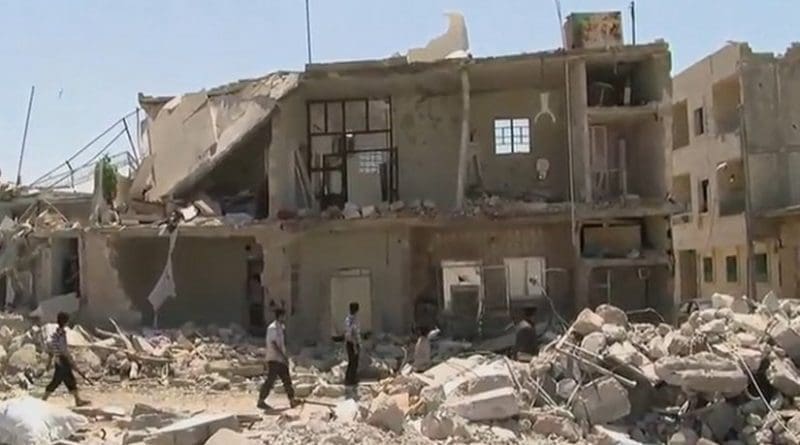Mosul And Aleppo: A Tale Of Two Cities – OpEd
By Arab News
By Gwynne Dyer*
Two great sieges are getting underway in the Middle East, one in Mosul in Iraq and the other in Aleppo in Syria.
They have a great deal in common, including the fact that the attackers both depend heavily on foreign air power, but they are treated by most international media as though they were completely different events. How similar they are will become clearer with the passage of time.
Seventy years without a really major war have allowed us to develop a major dislike for killing civilians from the air.
Nobody on either side would have been the least bit reluctant to blast Aleppo or Mosul into oblivion in 1945 if it served their strategic purposes, but moral tastes have changed.
Every civilian death from bombing in Iraq and Syria — but not the thousands of other civilian casualties each month — is therefore publicly catalogued and condemned.
The Russians are taking enormous criticism over their bombing of the rebel-held eastern part of Aleppo (although the indiscriminate “barrel bombs” are the work of the Syrian air force, not the Russians).
The US air force has been much more careful about its bombing around Mosul so far, but it too will end up having to choose between bombing the city heavily and seeing the Iraqi government’s attack fail.
Both Mosul and eastern Aleppo are Sunni Muslim cities facing an attempted reconquest by Shiite-dominated national governments.
In both cases the rebel fighters who control the besieged areas are extremists: Daesh in Mosul, and the Nusra Front in eastern Aleppo. (In Aleppo, the militants number perhaps a thousand out of ten thousand fighters, but they dominate both the fighting and the decision-making.)
In both cases, too, the troops on the government side are divided by ethnic and sectarian differences, and largely unreliable. Which is why, in the end, government victory in both countries depends on foreign air power.
In Aleppo, the troops leading the attack on the ground are mostly Shiite militias recruited from Lebanon, Iraq and Afghanistan and paid for by Iran. Actual Syrian army troops have been decimated and exhausted by five years of war, and those who remain are being carefully husbanded.
So they wait for the Russians to bomb the defenders to pieces, and just use the troops to mop up afterward.
In the case of Mosul, the attacking forces are even more varied. The Iraqi government’s regular troops are mostly Shiite, and the pro-government militias are entirely Shiite and notorious for treating Sunnis badly. Since almost everybody left in Mosul is Sunni, they are terrified of the government’s troops.
The Iraqi government has therefore promised that Shiite militias will not enter the city, nor will the Kurdish troops that are assisting in the early part of the offensive. What this means, however, is that very few soldiers will actually be fighting once the attack reaches the edge of the city proper.
There will be perhaps 25,000 Iraqi regular army troops in the final assault, of whom maybe half can be relied on to fight. There will be around 5,000 US troops in the area, but they are not allowed to engage in direct combat.
And there are about 1,500 Turkish army troops who have been training a Sunni militia north of Mosul (but the government in Baghdad has ordered them to leave).
Daesh’s five or six thousand fighters have had years to prepare their defenses, and street fighting uses up attacking troops very fast. Even “precision” airstrikes in urban areas always mean lots of dead civilians, but central Mosul will not fall unless the United States uses its air force to dig the defenders out.
If it does that, then the civilian casualties will be quite similar to those inflicted by the Russian air force in eastern Aleppo. But the western media will doubtless still find ways to see a huge difference between the two.
* Gwynne Dyer is an independent journalist whose articles are published in 45 countries.

